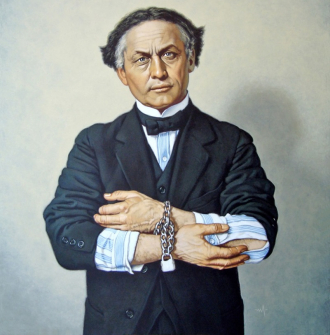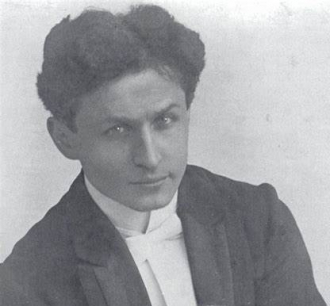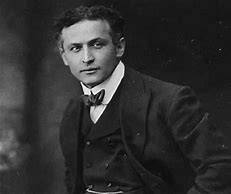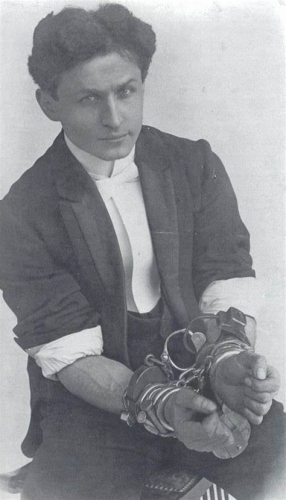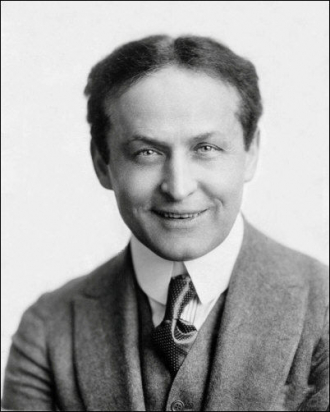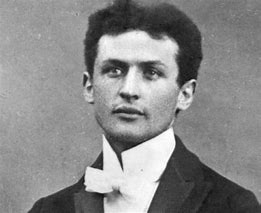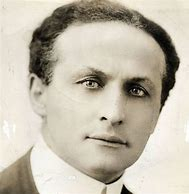Harry Houdini
Born Erik Weisz March 24, 1874 Budapest, Hungary
Died October 31, 1926 (aged 52) Detroit, Michigan, U.S.
Cause of death Peritonitis]
Occupation Illusionist, stunt performer, actor, historian, film producer, pilot, and debunker.
Years active 1891–1926
Spouse(s) Wilhelmina Beatrice "Bess" Rahner (m. 1894)
Relatives Theodore Hardeen (brother)
Harry Houdini (/huːˈdiːni/; born Erik Weisz, later Ehrich Weiss or Harry Weiss; March 24, 1874 – October 31, 1926) was a Hungarian-born American illusionist and stunt performer, noted for his sensational escape acts. He first attracted notice in vaudeville in the US and then as "Harry Handcuff Houdini" on a tour of Europe, where he challenged police forces to keep him locked up. Soon he extended his repertoire to include chains, ropes slung from skyscrapers, straitjackets under water, and having to escape from and hold his breath inside a sealed milk can with water in it.
In 1904, thousands watched as he tried to escape from special handcuffs commissioned by London's Daily Mirror, keeping them in suspense for an hour. Another stunt saw him buried alive and only just able to claw himself to the surface, emerging in a state of near-breakdown. While many suspected that these escapes were faked, Houdini presented himself as the scourge of fake spiritualists. As President of the Society of American Magicians, he was keen to uphold professional standards and expose fraudulent artists. He was also quick to sue anyone who imitated his escape stunts.
Houdini made several movies but quit acting when it failed to bring in money. He was also a keen aviator and aimed to become the first man to fly a plane in Australia.
Erik Weisz was born in Budapest to a Jewish family. His parents were Rabbi Mayer Sámuel Weisz (1829–1892) and Cecília Steiner (1841–1913). Houdini was one of seven children: Herman M. (1863–1885) who was Houdini's half-brother by Rabbi Weisz's first marriage; Nathan J. (1870–1927); Gottfried William (1872–1925); Theodore (1876–1945); Leopold D. (1879–1962); and Carrie Gladys (1882–1959), who was left almost blind after a childhood accident.
Weisz arrived in the United States on July 3, 1878, on the SS Fresia with his mother (who was pregnant) and his four brothers. The family changed their name to the German spelling Weiss, and Erik became Ehrich. The family lived in Appleton, Wisconsin, where his father served as Rabbi of the Zion Reform Jewish Congregation.
According to the 1880 census, the family lived on Appleton Street in an area that is now known as Houdini Square. On June 6, 1882, Rabbi Weiss became an American citizen. Losing his job at Zion in 1882, Rabbi Weiss and family moved to Milwaukee and fell into dire poverty.[9] In 1887, Rabbi Weiss moved with Ehrich to New York City, where they lived in a boarding house on East 79th Street. He was joined by the rest of the family once Rabbi Weiss found permanent housing. As a child, Ehrich Weiss took several jobs, making his public début as a 9-year-old trapeze artist, calling himself "Ehrich, the Prince of the Air". He was also a champion cross country runner in his youth. When Weiss became a professional magician he began calling himself "Harry Houdini", after the French magician Jean Eugène Robert-Houdin, after reading Robert-Houdin's autobiography in 1890. Weiss incorrectly believed that an i at the end of a name meant "like" in French. In later life, Houdini claimed that the first part of his new name, Harry, was an homage to Harry Kellar, whom he also admired, though it was more likely adapted from "Ehri," a nickname for "Ehrich," which is how he was known to his family. When he was a teenager, Houdini was coached by the magician Joseph Rinn at the Pastime Athletic Club.
Houdini began his magic career in 1891, but had little success. He appeared in a tent act with strongman Emil Jarrow. He performed in dime museums and sideshows, and even doubled as "The Wild Man" at a circus. Houdini focused initially on traditional card tricks. At one point, he billed himself as the "King of Cards". Some - but not all - professional magicians would come to regard Houdini as a competent but not particularly skilled sleight-of-hand artist, lacking the grace and finesse required to achieve excellence in that craft. He soon began experimenting with escape acts.
In 1906, Houdini created his own publication, the Conjurers' Monthly Magazine. It was a competitor to The Sphinx, but was short-lived and only two volumes were released until August 1908. Magic historian Jim Steinmeyer has noted that: "Houdini couldn't resist using the journal for his own crusades, attacking his rivals, praising his own appearances, and subtly rewriting history to favor his view of magic."
From 1907 and throughout the 1910s, Houdini performed with great success in the United States. He freed himself from jails, handcuffs, chains, ropes, and straitjackets, often while hanging from a rope in sight of street audiences. Because of imitators, Houdini put his "handcuff act" behind him on January 25, 1908, and began escaping from a locked, water-filled milk can. The possibility of failure and death thrilled his audiences. Houdini also expanded his repertoire with his escape challenge act, in which he invited the public to devise contraptions to hold him. These included nailed packing crates (sometimes lowered into water), riveted boilers, wet sheets, mail bags, and even the belly of a whale that had washed ashore in Boston. Brewers in Scranton, Pennsylvania and other cities challenged Houdini to escape from a barrel after they filled it with beer.
Many of these challenges were arranged with local merchants in one of the first uses of mass tie-in marketing. Rather than promote the idea that he was assisted by spirits, as did the Davenport Brothers and others, Houdini's advertisements showed him making his escapes via dematerializing, although Houdini himself never claimed to have supernatural powers.
After much research, Houdini wrote a collection of articles on the history of magic, which were expanded into The Unmasking of Robert-Houdin published in 1908. In this book he attacked his former idol Robert-Houdin as liar and a fraud for having claimed the invention of automata and effects such as aerial suspension, which had been in existence for many years. Many of the allegations in the book were dismissed by magicians and researchers who defended Robert-Houdin. Magician Jean Hugard would later write a full rebuttal to Houdini's book.
In 1913, Houdini introduced the Chinese Water Torture Cell, in which he was suspended upside-down in a locked glass-and-steel cabinet full to overflowing with water, holding his breath for more than three minutes. He would go on performing this escape for the rest of his life.
During his career, Houdini explained some of his tricks in books written for the magic brotherhood. In Handcuff Secrets (1909), he revealed how many locks and handcuffs could be opened with properly applied force, others with shoestrings. Other times, he carried concealed lockpicks or keys. When tied down in ropes or straitjackets, he gained wiggle room by enlarging his shoulders and chest, moving his arms slightly away from his body.
Houdini and Jennie, the Vanishing Elephant, January 7, 1918
Houdini in handcuffs, 1918
His straitjacket escape was originally performed behind curtains, with him popping out free at the end. Houdini's brother, (who was also an escape artist, billing himself as Theodore Hardeen), discovered that audiences were more impressed when the curtains were eliminated so they could watch him struggle to get out. On more than one occasion, they both performed straitjacket escapes while dangling upside-down from the roof of a building in the same city.[29]

